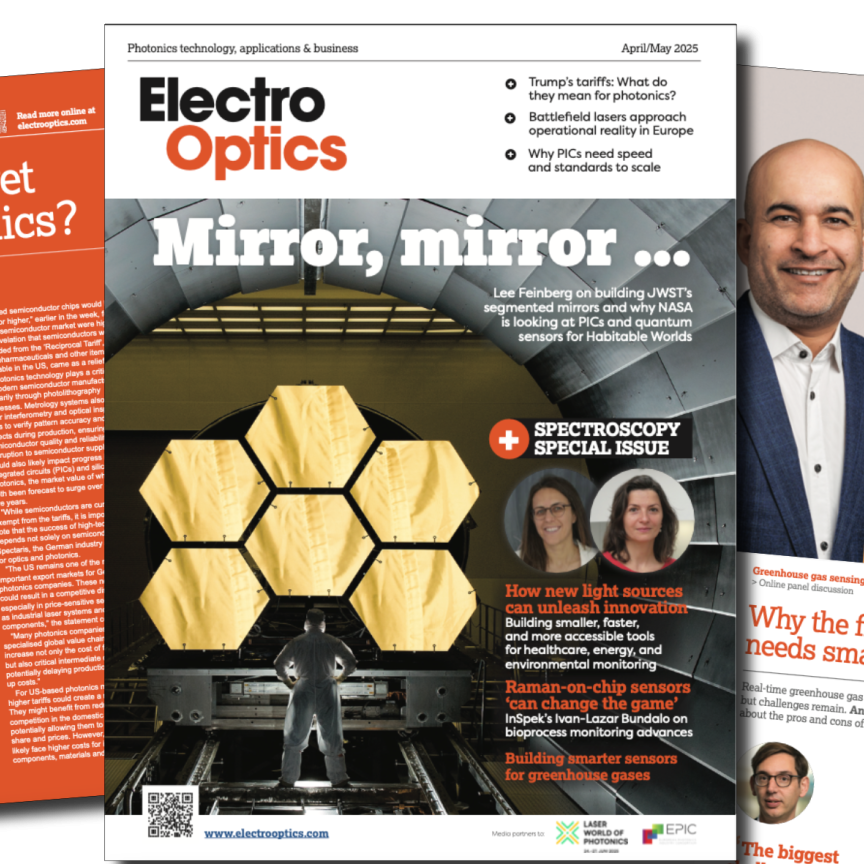Researchers have developed a remote sensing device that provides a more thorough way of monitoring photosynthesis in plants and trees, helping to reveal more about the effect of climate change on their ability to absorb and store carbon dioxide.
The technique, created by a team at the Optics of Photosynthesis Laboratory (OPL), University of Helsinki, Finland, builds on a previous method deployed by the researchers in 2017. It aims to measure chlorophyll fluorescence, an emission of radiation at the visible and near-infrared wavelengths. Chlorophyll fluorescence relates to photosynthesis and the health status of plants, and it can be measured from drones, aircraft and satellites. However, interpretation of the signal is complicated, and so far it has only been possible to measure it in discrete spectral bands from fully-grown trees in the field.
OPL’s new technique has permitted the remote observation of the full spectrum of fluorescence of mature trees growing in the forest. Measuring the whole spectrum of emission reveals information on both plant performance (how they photosynthesise) and the structure of the plants themselves.
Up until now, remote sensing methods for this purpose have only been designed to take measurements during the day, where most of the signal is too weak compared to sunlight. Therefore, measuring fluorescence during daytime, commonly referred to as solar-induced fluorescence (SIF), requires extremely sensitive and specialised instrumentation. The new technique differs from these previous efforts by using commercially available 4-in-1 (red-green-blue-white) LED technology, which is used to illuminate the forest at night to reveal the full spectrum of emission of whole trees. Not only is less sensitive – and therefore, cheaper – equipment required, but the data obtained is easier to interpret.
‘We realised we could use the night as a “natural light filter”, so we went into the forest at night and attached a strong wavelength-restricted light source (a commercial disco-type light) to a tower that excited the fluorescence. Next, we used specialist scientific instrumentation – a spectroradiometer – also mounted in the tower, to observe the signal’, explained researcher Jon Atherton.
Chlorophyll fluorescence and carbon sinks
The new instrument is a step towards ‘observing photosynthesis’ both on smaller scales (greenhouses, crops, forests) but also globally using satellites. Currently, the European Space Agency is preparing the FLEX satellite mission, which aims to map fluorescence globally. The hope is that fluorescence will be used to estimate plant photosynthesis – the process that drives the terrestrial carbon cycle – from space.
With carbon dioxide being a major greenhouse gas exacerbating global warming, the role of plants as a carbon sink – a natural system that stores atmospheric carbon – is crucial in limiting global temperature rise. However, studies have suggested that climate change could affect the ability of plants and forests to store carbon dioxide, and scientists are trying to gather more data to better understand these processes and how climate change could affect them.
Currently, measuring the exchange of carbon dioxide between forests and the atmosphere is accomplished with expensive instrumentation in specific places (flux tower sites), which produce local estimates of fluxes (carbon exchange) close to the sites. This is where fluorescence enters into play, by providing a remote-sensing-friendly means of estimating photosynthesis across the landscape, by filling in the coverage gaps between the stations. ‘It is the potential for measuring fluorescence from space that really motivated us to do this work, although our results could have other applications too, such as phenotyping, precision farming or forest nurseries. We hope that our data can be used to inform algorithms used to “retrieve” fluorescence from space,’ Atherton added.
‘Such algorithms work in a slightly different way to our spectral technique, as they exploit dark atmospheric “lines” to estimate fluorescence. Hence, the full emission spectrum remains effectively hidden in satellite data, and that is what our data reveals.’


